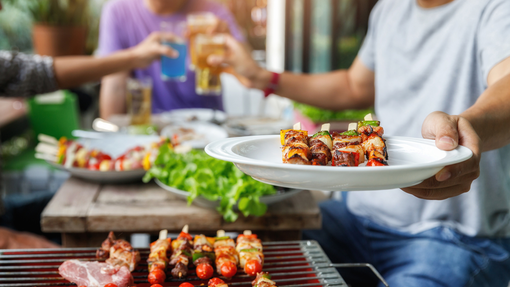
Nine ways to save money on your food shop
Here are nine ways to help you to save money on your food shop.
1. Make a list, and check it twice
With apologies for the out-of-season reference, shopping lists are the first weapon in your arsenal when it comes to fighting both food waste - and extra spending. Write your shopping list in conjunction with your meal plan and you won’t just be less likely to forget anything, you’ll also find that you’re less likely to go off-piste with impulse buys.
2. Find a food shopping routine
We know life gets hectic, and we’ve all been there with the last minute dash to the shops for something for dinner after a long day. But, where you can, try to get into a regular routine with your food shop – this will help limit the need for lots of extra shopping trips (and the potential that brings for extra spending).
Whether that’s having a think about meals and your food shopping list on the same day each week, keeping a list handy on your phone for when things spring to mind, or booking in a regular online delivery or click and collect slot – find a rhythm that works for you.
3. Shop own-brand
Sure, the packaging may not be as nice, but own brand products can be as good as their branded cousins, while being a fraction of the price. Don’t forget to compare the unit price or the cost by weight to make sure you’re definitely getting the best deal.
4. Beware of the deals
There seems to be a deal to be had around every corner of every shop these days: Buy One Get One Free, Three for Two, Two for One… We’re all guilty of falling for them, and who can blame us?
Because we can never resist what seems to be a bargain, we often end up buying things we just don’t need, or buying too much. It’s not a bargain if it ends up in the bin!
5. Steer clear of pre-prepared fruit and veg
It’s undoubtedly more convenient to buy pre-prepared fruit and veg – especially cubes of that most hard-to-chop of vegetables, the butternut squash – but you’ll pay a premium for it. Similarly, mashing your own spuds might take a bit longer, but you’ll almost certainly save a little if you swerve the ready-made version!
If you do need some pre-prepared foods, try the freezer aisle for longer shelf lives and, usually, cheaper prices, too.
6. Look at the labels
Best Before and Use By dates can be complicated, but if you’re in the business of saving money on your supermarket shop they’re worth thinking about. Keep an eye on the Use By date in particular to make sure you’re giving yourself enough time to use it.
7. Shop at the end of the day
While we’re on the subject of date labels, if you’re shopping for this evening’s dinner, you might find that there are some yellow-stickered clearance bargains to be had because (still perfectly good!) fresh food is approaching the date on the label. Even if you can’t use it straight away, it’s still great for freezing (and you can freeze right up to the Use by date too)! The yellow stickers tend to go on towards the end of the day, so time your shop right and you might just be able to snag a great price.
If you don’t have a supermarket close by but have a local greengrocer or market, not only can you buy fresh fruit and veg loose (buying just the amount that you need), but often towards closing time there are some great deals to be had.
8. Take advantage of coupons and loyalty card schemes
Loyalty card schemes and coupons are another way to help you save, whether on individual purchases or by accumulating points that give you money off future shops. Just be careful not to fall into the trap of buying something you don’t need just because you’ve got a money-off voucher. We’ve all been there!
9. Buy one or two products that help you use leftovers
Make your food go further by investing in one or two inexpensive items to help you make the most of your leftovers – conjuring up extra meals will mean you have less to buy overall, saving money as well as food! For example, tasty stock cubes, pots or pastes can turn leftover veg into a lovely soup, and a bag of rice or baking potatoes will help you make a meal out of leftover chilli or curry.
While you’re at it, have a rummage in your kitchen for reusable airtight containers that will give you an easy way to freeze leftovers and put them in an easy to access cupboard or drawer. (Top tip: keep hold of those plastic containers from any takeaways, they’re great to reuse for this!). Having portions of leftover meals to hand in the freezer will save money on future shops by turning excess food into homemade ‘ready meals’.




